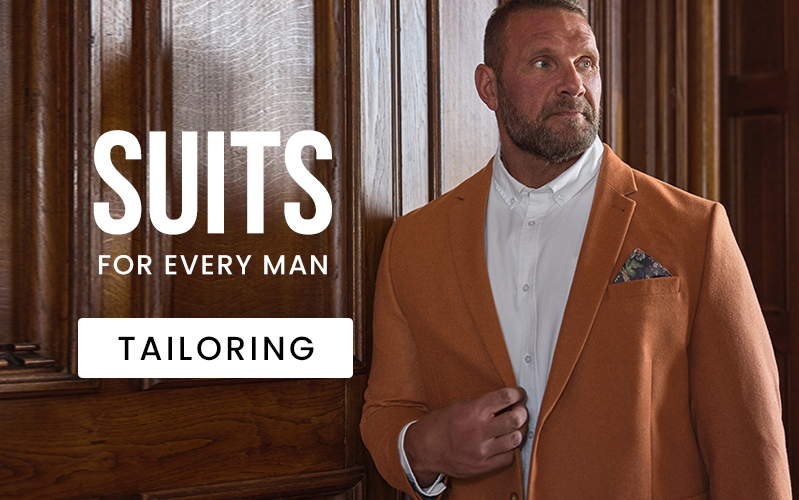Discover how men’s suits reflect style, professionalism, and timeless elegance
Men’s suits have long represented elegance, professionalism, and personal style. Whether worn for business meetings, formal events, or social gatherings, suits remain a timeless wardrobe essential. Understanding the history, fabric choices, tailoring methods, and cultural significance of suits helps highlight why they continue to be valued across generations. By exploring their design elements, advantages, and modern adaptations, it is possible to gain a deeper perspective on how suits shape impressions, confidence, and identity in both professional and personal contexts.

1. Historical Significance of Men’s Suits
The origins of men’s suits can be traced back to the 17th and 18th centuries in Europe, when tailored clothing became associated with social status and sophistication. Over time, the suit evolved into a symbol of refinement, gaining prominence in the 19th century as a standard for business and formal wear. Today, suits are not only historical artifacts but also living traditions that carry forward a legacy of elegance and cultural meaning.
2. Fabrics and Material Quality
The quality of a suit is heavily influenced by the fabrics used. Wool, linen, cotton, and blends each provide different characteristics. Wool is valued for its durability and ability to regulate temperature, while linen offers breathability for warmer climates. Cotton suits are versatile, suitable for semi-formal occasions, and blended fabrics often combine strength with comfort. Recognizing these material differences allows wearers to select suits suited to specific environments and personal preferences.
3. Tailoring and Fit
One of the most important aspects of a suit is its tailoring. A well-fitted suit enhances posture, creates clean lines, and emphasizes proportions. Tailoring may involve adjustments in shoulder width, sleeve length, or waist structure. While ready-to-wear suits are widely available, tailored suits reflect individuality and attention to detail. The concept of “fit” goes beyond size, serving as a statement of refinement and self-expression.
4. Colors and Patterns
Suits are available in a wide range of colors and patterns, each carrying specific associations. Navy and charcoal gray are considered classic choices for business and professional settings. Black suits are often reserved for formal occasions, while lighter shades such as beige or light gray can be used for social gatherings or seasonal wear. Patterns, including pinstripes or checks, add personality while maintaining elegance. Choosing colors and patterns reflects cultural norms, personal style, and situational appropriateness.
5. Cultural and Social Meaning
The suit carries cultural weight across societies. In many regions, wearing a suit is associated with respectability, authority, and professionalism. Suits are worn at weddings, graduations, and diplomatic events, reinforcing their symbolic role in life’s milestones. In modern fashion, suits have also been reinterpreted as versatile garments, bridging traditional values with contemporary trends.
6. Practical Benefits of Wearing Suits
Beyond aesthetics, suits offer practical benefits. They project confidence and competence, which can positively influence first impressions in professional and social contexts. Suits also create a uniform appearance, simplifying decisions about daily attire. Their adaptability across formal and semi-formal occasions makes them one of the most functional garments in men’s wardrobes.
7. Modern Adaptations and Trends
Contemporary suits have evolved to meet modern preferences. Slim-fit designs highlight sharp silhouettes, while casual suits incorporate softer fabrics for comfort. Some designers experiment with unconventional colors, patterns, or even unstructured tailoring. These adaptations demonstrate how the suit remains relevant, constantly adapting to fashion shifts without losing its traditional essence.
8. Symbolism of Confidence and Identity
A well-chosen suit does more than dress the body; it shapes perception and identity. Wearing a suit can boost self-confidence, influencing how individuals present themselves and how others respond. For many, a suit becomes a personal statement of ambition, reliability, and respect for the occasion. This symbolic quality ensures that suits remain powerful tools of self-expression.
9. Suit Accessories and Complements
Accessories play a crucial role in enhancing the overall appearance of a suit. Ties, pocket squares, cufflinks, and belts add detail and individuality. Shoes, whether oxfords or loafers, complete the look. By carefully selecting accessories, men can create diverse styles from a single suit, making the garment versatile and expressive.
10. Sustainability and Longevity
High-quality suits, when properly cared for, can last many years. This durability contributes to sustainable fashion by reducing the need for frequent replacements. Choosing classic designs ensures that suits remain relevant across different style eras. Understanding suit care, such as dry cleaning schedules and proper storage, helps maintain longevity while promoting responsible fashion practices.






